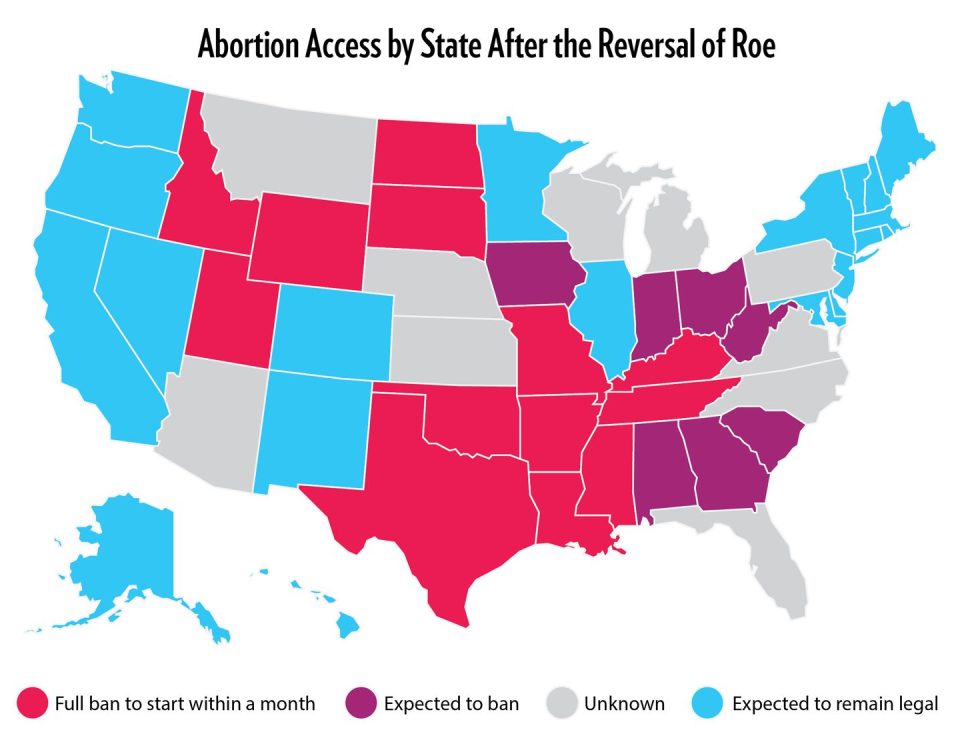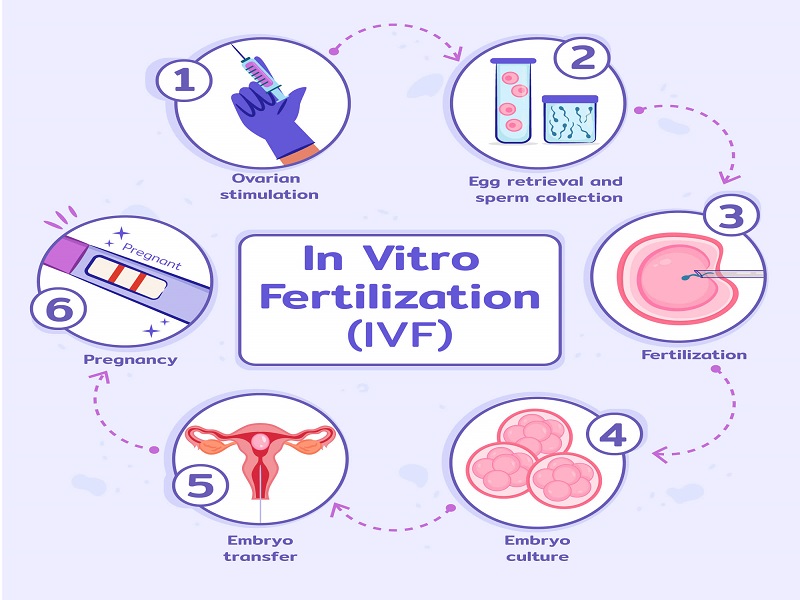
How Long Does IVF Take? Your Complete Guide to the Timeline
April 12, 2025
How Much Does IVF Really Cost? Your Guide to Understanding In Vitro Fertilization Expenses
April 12, 2025How Expensive Is IVF? A Deep Dive into Costs, Options, and What You Need to Know
In vitro fertilization (IVF) is a life-changing option for many hoping to build a family, but the price tag can feel like a mountain to climb. If you’ve ever wondered just how expensive IVF really is—or how to make it work for you—you’re not alone. It’s a question that pops up everywhere, from late-night Google searches to heartfelt chats on social media. The truth? IVF costs vary wildly, and there’s more to it than just a single number. Let’s break it down together, step by step, so you can see the full picture and figure out what it might mean for your journey.
The Big Picture: What Does IVF Actually Cost?
IVF isn’t cheap—there’s no sugarcoating that. On average, a single cycle in the United States runs between $12,000 and $15,000, according to the American Society for Reproductive Medicine. But that’s just the starting point. When you add in medications, testing, and extra procedures, the total can easily climb to $20,000 or more per round. And here’s the kicker: most people don’t get lucky on the first try. Studies show the average patient needs 2 to 3 cycles to have a baby, pushing the total cost closer to $40,000–$60,000 for many families.
Why such a wide range? It depends on where you live, the clinic you choose, and what your specific needs are. A basic cycle might cover egg retrieval, fertilization, and embryo transfer, but extras like genetic testing or donor eggs can send the bill soaring. For example, in big cities like New York or San Francisco, you might pay upwards of $25,000 per cycle due to higher demand and living costs. Meanwhile, smaller towns could offer prices closer to $10,000–$12,000. It’s a lot to take in, but knowing the baseline helps you plan.
What’s Included in That Price Tag?
IVF isn’t just one procedure—it’s a whole process. To understand the cost, you need to know what you’re actually paying for. Here’s a breakdown of the main pieces:
- Initial Consultations and Testing: Before anything starts, you’ll meet with a fertility specialist. They’ll run blood tests, ultrasounds, and maybe a semen analysis to figure out what’s going on. This can cost $250–$500, though some clinics bundle it into the cycle fee.
- Medications: These are the drugs that help your ovaries produce multiple eggs. Prices vary based on dosage and type, but expect to spend $3,000–$5,000 per cycle. Some folks need more, pushing it closer to $7,000.
- Egg Retrieval and Lab Work: This is the core of IVF—getting the eggs out and fertilizing them in a lab. It’s usually $6,000–$10,000, including anesthesia and the embryologist’s magic.
- Embryo Transfer: Placing the embryo in the uterus is often part of the base fee, but a frozen embryo transfer (if you’re saving some for later) can add $3,000–$6,000.
- Extras: Things like intracytoplasmic sperm injection (ICSI)—where a single sperm is injected into an egg—or preimplantation genetic testing (PGT) can tack on $1,000–$5,000 each.
Every clinic prices things a bit differently, so it’s worth asking for a detailed list upfront. Some bundle everything into one fee; others charge à la carte. Either way, it adds up fast.
Why Does IVF Cost So Much?
You might be wondering why IVF feels like it’s priced like a luxury car. It’s not just about profit—there’s a lot going on behind the scenes. High-tech equipment, skilled doctors, and a team of lab experts all play a role. Plus, the medications are specialized and often imported, driving up the expense. A 2023 study from the Journal of Assisted Reproduction and Genetics found that labor and tech costs account for nearly 60% of an IVF cycle’s price. Add in the fact that success isn’t guaranteed, and clinics have to cover the overhead for every attempt, not just the wins.
Then there’s the emotional side. Couples often feel pressured to keep going, even when the odds dip, because the dream of a baby is so powerful. Clinics know this, and while most are ethical, the demand keeps prices high. It’s a tough reality, but understanding it can help you approach IVF with clear eyes.
Hidden Costs You Might Not Expect
Beyond the obvious, there are sneaky expenses that catch people off guard. These can turn a “manageable” budget into a financial scramble if you’re not prepared. Here are a few to watch out for:
- Travel and Time Off: If the best clinic isn’t nearby, you might need to travel for appointments. Gas, flights, or hotel stays add up, especially over multiple visits. Plus, taking time off work—often unpaid—can hit your wallet hard.
- Storage Fees: Freezing extra embryos or eggs for later? That’s $500–$1,000 per year in storage costs, and it’s an ongoing expense until you use them or let them go.
- Emotional Support: Therapy or support groups aren’t always covered by insurance, but they’re a lifeline for many. A session might cost $100–$200, and it’s worth factoring in.
I talked to a friend who went through IVF last year, and she said the little things—like parking at the clinic or last-minute prescription refills—added nearly $2,000 to her total. It’s not something you see in the brochures, but it’s real.
Quick Quiz: What’s Your IVF Budget Style?
Let’s make this fun for a sec. How do you handle big expenses? Pick one:
- A) I save up and pay it all upfront—no debt for me!
- B) I’d rather spread it out with a loan or payment plan.
- C) I’m crossing my fingers for insurance or a miracle discount.
No wrong answers! Your style can shape how you tackle IVF costs, and we’ll dig into options for each later on.
Does Insurance Cover IVF?
Here’s where things get tricky. In the U.S., insurance coverage for IVF is a patchwork mess. Only 19 states have laws requiring some level of fertility treatment coverage, and even then, IVF isn’t always included. Places like New York and Massachusetts offer decent options—sometimes covering up to 3 cycles—but in states like Alabama or Idaho, you’re usually on your own.
Even with coverage, there are catches. You might need to prove you’ve tried other treatments first, or your plan could cap the amount it pays. A 2024 Kaiser Family Foundation report found that only 25% of large employers offer IVF benefits, and small companies rarely do. If you’re lucky enough to have it, a single cycle might drop to $5,000–$10,000 out of pocket. Without it? You’re looking at the full $20,000+.
Check your policy or talk to HR. Ask: “Does this cover IVF specifically? Are there limits?” It’s a hassle, but it could save you thousands.
How Success Rates Affect the Price
IVF isn’t a one-and-done deal, and that’s a big reason costs pile up. Success rates depend on age, health, and a bit of luck. According to the CDC’s 2021 data, women under 35 have a 52% chance of a live birth per cycle. By age 40, that drops to 18%. Over 42? It’s under 5%. So, older folks often need more tries, and each try means another bill.
Think of it like this: if a cycle costs $20,000 and you need 3 to succeed, that’s $60,000. But if you’re younger and nail it on the first go, you’re out $20,000 total. Age isn’t the only factor—conditions like endometriosis or low sperm count can mean extra steps (and cash). It’s not fair, but it’s how the math works.
Creative Ways to Cut IVF Costs
Feeling sticker-shocked? Don’t give up yet—there are ways to make IVF more doable. People get creative, and you can too. Here’s how:
- Shop Around: Prices vary by clinic, even in the same area. Call a few and compare base fees. Some offer discounts for paying upfront or doing multiple cycles.
- Mini IVF: This uses fewer drugs and aims for fewer eggs, dropping the cost to $5,000–$7,000 per cycle. It’s not for everyone, but it’s gentler on your body and wallet.
- Shared Risk Programs: Some clinics refund part of your money if you don’t have a baby after a set number of cycles. It’s like a safety net—usually $20,000–$30,000 upfront for 3–6 tries.
- Fertility Grants: Groups like BabyQuest or the Tinina Q. Cade Foundation give out thousands to help cover costs. Apply early—they’re competitive.
One couple I read about saved big by traveling to Mexico, where IVF can cost $5,000–$8,000 per cycle. Quality matters, so research the clinic, but it’s an option if you’re near the border.
5-Step Guide to Budgeting for IVF
Ready to plan? Follow these steps to get your finances in order:
- Add Up the Basics: Estimate $15,000–$20,000 per cycle, including meds and fees.
- Check Insurance: Call your provider and see what’s covered. Write down the details.
- Set a Goal: Decide how many cycles you can afford—1, 2, or 3—and multiply.
- Explore Savings: Look into loans, grants, or cheaper clinics. Pick one that fits.
- Build a Buffer: Save an extra $2,000–$3,000 for surprises like travel or storage.
It’s not fancy, but it works. Start small and adjust as you go.
The Global Perspective: IVF Around the World
IVF costs aren’t just a U.S. thing—they vary worldwide, and that’s worth a look. In Europe, countries like Spain and the Czech Republic offer cycles for $4,000–$6,000, with solid success rates. Canada’s closer to $10,000–$15,000, while Australia sits around $8,000 after government subsidies. In India, it’s as low as $2,000–$3,000, though travel and quality checks are key.
Why the difference? Healthcare systems, labor costs, and regulations play a role. Some folks hop borders for “fertility tourism,” saving cash without sacrificing care. A 2024 study from BioSpace noted that 15% of U.S. IVF patients consider going abroad. It’s not for everyone, but it’s a real money-saver if you’re game.
The Emotional Cost Nobody Talks About
Money’s only half the story. IVF takes a toll on your heart and mind, and that’s a cost you can’t ignore. A 2024 Stanford study found that women who don’t conceive after fertility treatments are 48% more likely to need mental health support. The ups and downs—hope, disappointment, repeat—hit hard. Couples report higher stress and even divorce rates when IVF drags on.
My cousin went through it, and she said the waiting was the worst. Every test felt like a verdict. Therapy helped her cope, but it added $1,000 to her tab over six months. It’s not in the budget spreadsheets, but it’s part of the deal. Plan for it—whether it’s a counselor, a friend, or just time to breathe.
New Trends in IVF: What’s Changing the Game?
IVF’s evolving, and that’s shaking up costs in cool ways. Here are three trends worth watching:
- Low-Cost Clinics: Some spots are stripping things down—fewer frills, more efficiency—to offer cycles for $5,000–$10,000. They’re popping up in cities like Austin and Raleigh, targeting folks who can’t swing the usual price.
- AI in Embryo Selection: Clinics are using artificial intelligence to pick the best embryos, boosting success rates. A 2023 trial from CooperSurgical showed a 15% bump in live births with AI. It’s pricier upfront ($500–$1,000 extra), but it could mean fewer cycles.
- At-Home Monitoring: New kits let you track hormones or do ultrasounds at home, cutting clinic visits. They’re still rolling out—about $200–$300 per cycle—but they save time and travel cash.
These aren’t everywhere yet, but they’re hints of a cheaper, smarter future. Keep an eye out.
Poll: What’s Your IVF Dealbreaker?
Pause for a sec—what’s the one thing that’d stop you from trying IVF? Vote below:
- A) The cost is too high.
- B) The emotional stress.
- C) The time it takes.
- D) I’d do it no matter what!
Your pick says a lot about where you’re at. Share it with a friend and see what they think.
IVF and Society: Who’s Paying the Price?
Here’s a curveball: IVF costs don’t just hit your bank account—they ripple out. In states like California, new laws are pushing insurance to cover IVF, which could raise premiums for everyone. A 2024 X post I saw griped that “everyone’s insurance goes up to pay for the few who use it.” Fair or not, it’s a debate heating up.
Then there’s access. Lower-income families often can’t afford IVF, even with help. A 2023 SIEPR study showed that insurance coverage mostly benefits higher earners, leaving gaps for the rest. It’s not just about money—it’s about who gets a shot at parenthood. Food for thought.
Real Stories: What IVF Costs Look Like Up Close
Numbers are one thing; people are another. Meet Sarah, a 34-year-old teacher from Ohio. She and her husband spent $45,000 over two cycles—one failed, one worked. They took out a loan, skipped vacations, and leaned on family. “It was brutal,” she said, “but holding our son made it worth it.”
Then there’s Mark, 41, from Texas. He’s single, used a donor egg and surrogate, and dropped $120,000 total. “I sold my car and moved to a cheaper place,” he told me. “No regrets, but I wish I’d known how steep it’d get.” Their stories show the range—and the grit—it takes.
The DIY Data: A Simple Cost Breakdown
I crunched some numbers based on clinic websites and patient forums from 2024. Here’s what an “average” IVF journey might cost over 2 cycles, with no insurance:
| Item | Cost (Cycle 1) | Cost (Cycle 2) | Total |
|---|---|---|---|
| Base Fee | $12,000 | $12,000 | $24,000 |
| Medications | $4,000 | $4,000 | $8,000 |
| Genetic Testing (PGT) | $3,000 | – | $3,000 |
| Frozen Transfer | – | $4,000 | $4,000 |
| Travel/Miscellaneous | $1,000 | $1,000 | $2,000 |
| Grand Total | $41,000 |
This is a rough sketch—your mileage may vary. But it’s a starting point to see how costs stack up.
3 Things You Won’t Find in Most IVF Cost Guides
Digging deeper, I found some angles that don’t get enough airtime. These could shift how you think about IVF expenses:
- The Tax Trick: You can deduct IVF costs on your taxes if they exceed 7.5% of your adjusted gross income. A 2024 IRS update confirmed fertility treatments qualify as medical expenses. For a $50,000 income, that’s anything over $3,750—potentially saving you $2,000–$5,000 back. Talk to a tax pro.
- Employer Perks: Some companies—like Starbucks or Google—offer IVF benefits even for part-timers. A 2023 survey I stumbled across on X showed 1 in 8 big firms now include it. Check your job’s fine print or ask HR.
- Cycle Timing: Starting IVF right after a failed cycle can save on meds and prep, cutting $1,000–$2,000 off the next round. Clinics don’t always push this, but it’s a hack if your body’s ready.
These aren’t game-changers for everyone, but they’re tools most articles skip.
Making IVF Work for You
So, how do you tackle this beast? It’s about strategy and mindset. Start by getting real with your finances—how much can you save or borrow? Then, research like crazy. Call clinics, read reviews, and don’t be shy about negotiating. One study from FertilityIQ found 27% of patients snag a discount just by asking.
Next, lean on support. Online forums, local groups, or even a savvy friend can point you to resources. And don’t skip the emotional prep—IVF’s a marathon, not a sprint. Set small goals, like saving $5,000 by next summer, to keep the momentum.
Checklist: Are You IVF-Ready?
Here’s a quick gut check before you dive in:
- ✔️ I’ve got a rough budget (or a plan to make one).
- ✔️ I’ve checked my insurance and job benefits.
- ✔️ I’ve researched at least 3 clinics.
- ❌ I’m still clueless about costs.
- ❌ I haven’t thought about the emotional side.
If you’ve got more checks than X’s, you’re on solid ground. If not, no sweat—start with one and build from there.
The Bottom Line: Is IVF Worth It?
IVF’s expensive—there’s no dodging that. It’s a mix of hope, science, and a whole lot of cash, with no guarantees. But for many, it’s the path to a family they’d never have otherwise. The trick is going in informed, not just about the dollars but the whole ride. Whether it’s $20,000 or $60,000, the real cost is what it means to you.
Take a breath, talk it over with someone you trust, and dig into your options. You’ve got this—one step at a time. What’s your next move?




